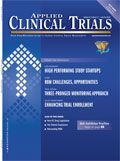Half of All Drugs Today are Developed Through Collaborations
Tufts CSDD

Facing high innovation risk, costs, and inefficiencies, sponsor companies have increasingly engaged in establishing risk-sharing partnerships, including joint ventures, mergers and acquisitions, in-licensing, and co-development arrangements.
To understand collaboration practices and preferences, the Tufts Center for the Study of Drug Development (Tufts CSDD) examined the development and approval histories of 289 drugs approved by the FDA between 2000 through 2011. Of these drugs, half involved a collaborative development arrangement, with licensing deals being the most common risk-sharing approach.
A quarter of these collaborations were part of a merger, acquisition, or co-development arrangement. Tufts CSDD also found that the prevalence for risk-sharing collaborations varied by therapeutic area, with approved central nervous system drugs having the highest prevalence.
The growth of collaborative risk-sharing innovation models will likely accelerate in a drug-development operating environment characterized by scientifically and logistically complex and demanding protocols, low success rates, and high R&D investments that are targeting smaller market opportunities.
— Tufts Center for the Study of Drug Development, http://csdd.tufts.edu/.

Improving Relationships and Diversifying the Site Selection Process
April 17th 2025In this episode of the Applied Clinical Trials Podcast, Liz Beatty, co-founder and chief strategy officer, Inato, discusses a number of topics around site engagement including community-based sites, the role of technology in improving site/sponsor relationships, how increased operational costs are impacting the industry, and more.
Behind the Buzz: Why Clinical Research Leaders Flock to SCOPE Summit
February 7th 2025In this episode, we meet with Micah Lieberman, Executive Conference Director for SCOPE Summit (Summit for Clinical Ops Executives) at Cambridge Innovation Institute. We will dive deep into the critical role of collaboration within the clinical research ecosystem. How do we bring together diverse stakeholders—sponsors, CROs, clinical trial tech innovators, suppliers, patients, sites, advocacy organizations, investors, and non-profits—to share best practices in trial design, program planning, innovation, and clinical operations? We’ll explore why it’s vital for thought leaders to step beyond their own organizations and learn from others, exchanging ideas that drive advancements in clinical research. Additionally, we’ll discuss the pivotal role of scientific conferences like SCOPE Summit in fostering these essential connections and collaborations, helping shape the future of clinical trials. Join us as we uncover how collective wisdom and cross-industry partnerships are transforming the landscape of clinical research.